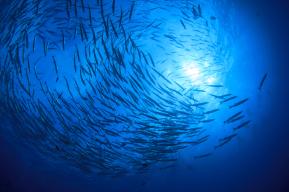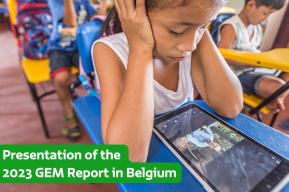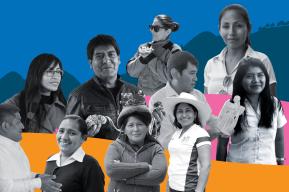Located on England’s Southeast Coast, The Living Coast UNESCO Biosphere, United Kingdom (also known as the Brighton & Lewes Downs Biosphere Reserve) is a complex patchwork of rural, coastal, marine and urban environments. Rich in artistic and literary history as well as natural beauty, the area is a prime destination for summer holiday makers from London and across the Southeast. Up to 12 million tourists visit the region every year, enjoying the shingle beaches, chalk cliffs and freshwater wetland. However, the main highway running through the biosphere reserve, the A27, carries a high volume of traffic and is a significant pollutant source, not least by the amount of highway runoff water it generates. Polluted highway runoff is the third highest cause of water pollution in the United Kingdom.
A pioneering solution is now at hand. The “Sustainable Management of Urban Aquifers” project, headed by The Aquifer Partnership (TAP), alongside the Brighton & Lewes Downs Biosphere Reserve and the School of Applied Sciences at the University of Brighton, is recording and monitoring the current quality of surface water runoff from the local road network. Its primary objective is to understand what will happen to the water as it moves through the rainscape after its construction. Launched in 2016, The Aquifer Partnership is a collaboration between Brighton & Hove City Council, the Environment Agency, South Downs National Park Authority and Southern Water to protect the aquifer of the Brighton chalk block.
The project is three-fold, with the objectives of firstly, researching into the impacts of road surface water runoff as part of a two-year Master of Research (MRes) project at the University of Brighton; secondly, leading educational partnerships with 4 local schools notably through the engagement of students; and, finally forming lasting community engagement with the Wild Park Rainscape.
The Wild Park Rainscape is a sustainable drainage system (SuDS), designed as a series of ponds, swales and shallow planted basins to clean surface water from a section of the highway. A baseline ecological assessment of the site calculated that the project would have an overall Biodiversity Net Gain of 146%. Due to project constraints, the Wild Park Rainscape altered its initial design away from a floating wetland to an alternative vegetation and planting proposal which will deliver a similar outcome. The rainscape is on track for construction during the summer and is due to be completed this year in autumn.
The project adopts an innovative community-based approach. Since the project initiation phase, the local community has been engaged and consulted on the plans. Community members have already joined a “Friends of the Wild Park Rainscape” group. Their first meeting, which took place on 6 February and was attended by 7 community members, established the scope for local people to be involved in the rainscape’s long-term care.
Masters in Research student, Polly Walters, has been appointed to work on the “Sustainable Management of Urban Aquifers Project”. In November 2022, the first water and sediment samples were taken from the keep balancing pond, followed by a second sample trip in March 2023. Analysis of the first round of samples is already underway in tandem with a detailed literature review.
Even as the rainscape is undergoing construction, there are still opportunities for learning, as 3 school activities are planned with the Wild Park Rainscape, including summer pre-construction presentations and autumn post-construction site visits.
The MRes aspect of this project is focused around studying the workings of this exciting, exemplar SuDS project, through pre-, mid- and post-construction monitoring. The taught aspect of this course provides not only the learning required to complete this work, but also the skills and knowledge required for the research needed.
As well as developing knowledge around SuDS, I have had the exciting opportunity of working with current industry professionals on a project designed to inform and improve current work in this area.
The project’s leading partner, The Aquifer Partnership, has already well-established links with local schools, having built three rain gardens in Moulsecoomb Primary School, Carden Primary School and Wallands Primary School. Pupils were engaged through assemblies and workshops and their drawings have been incorporated into the rain garden designs.
Moulsecoomb Primary School’s rain garden has been such a success that it was featured in a TV programme as an example of micro-level adaptations to climate change. Similarly, a local secondary school, Brighton Aldridge Academy took part in a graffiti art project to decorate an underpass leading to the Wild Park Rainscape. Students offered their designs in workshops which were then interpreted by artists to represent water, pollution, and the chalk and rain gardens of the aquifer.
Once the Wild Park Rainscape is completed, the biosphere reserve will have gained a new diverse habitat for native species and an innovative method of cleansing highway water runoff, ensuring a healthier habitat for both residents and wildlife. By establishing such close ties with the local community, encouraging them to become stewards of the rainscape, and engaging local children in the importance of green spaces and clean water, it is hoped that the rainscape will be managed successfully from a grassroots level going forward, supported by the continued oversight of the project team.
Biosphere reserves serve as useful sites to test innovative solutions for water management, which pave the way in achieving SDG 6 and contribute to SDG 13, SDG 14 and SDG 15. This project provides a good example of solutions for managing underground water, which supports people and ecosystems, and responds to the complex dual pressures of human activity and climate change. The “Sustainable Management of Urban Aquifers” project has so far achieved impressive results which promote a more integrated ecosystem-climate-water nexus and sustainable development.
As part of the UNESCO and the abrdn Charitable Foundation (aCF) 3-year partnership launched in 2022, the project “Promoting sustainable development through UNESCO’s programmes and sites” seeks to promote a more sustainable and climate neutral Europe by working with Biosphere Reserves and other UNESCO sites to act as pilot sites for sustainable development.













